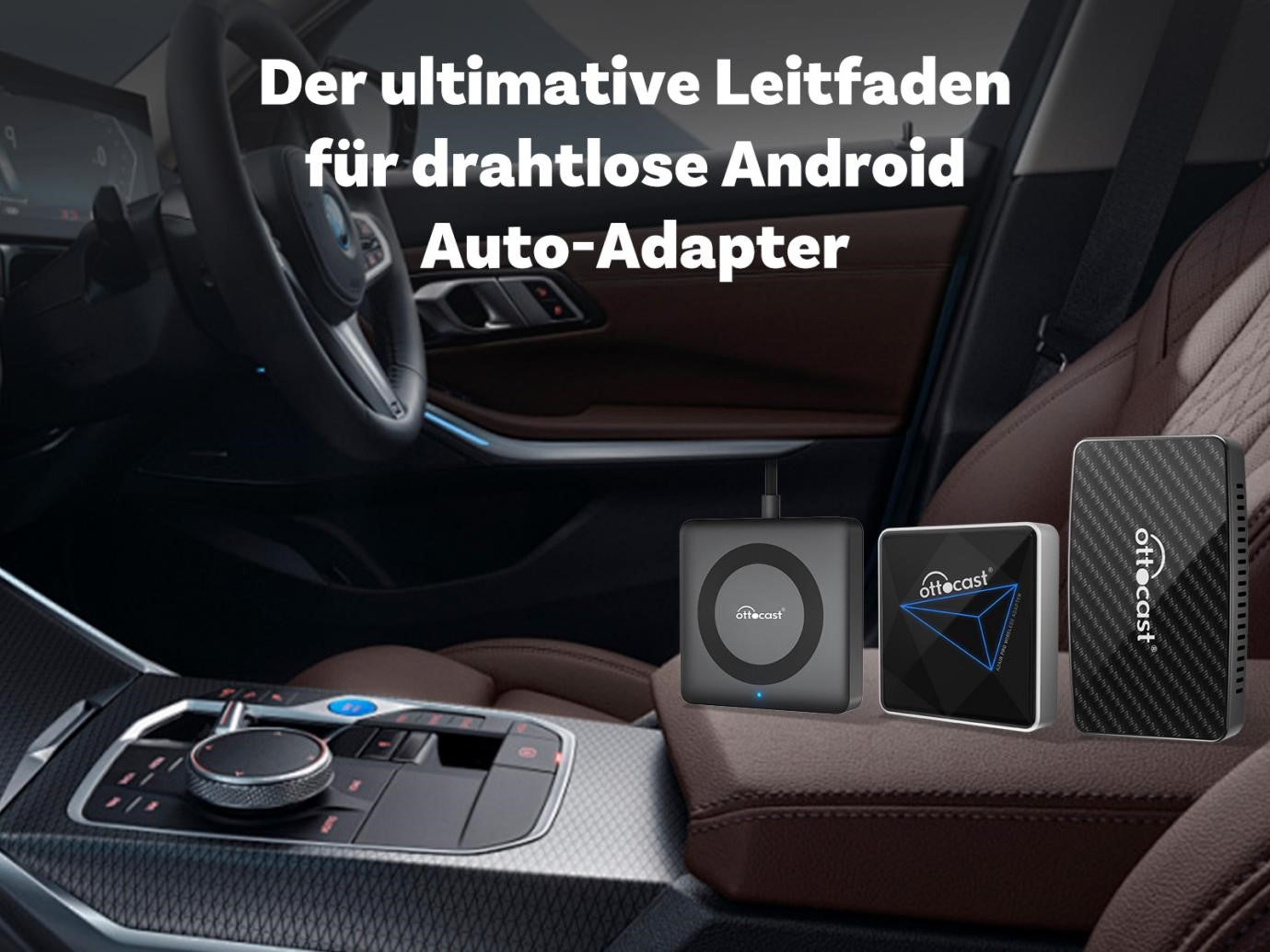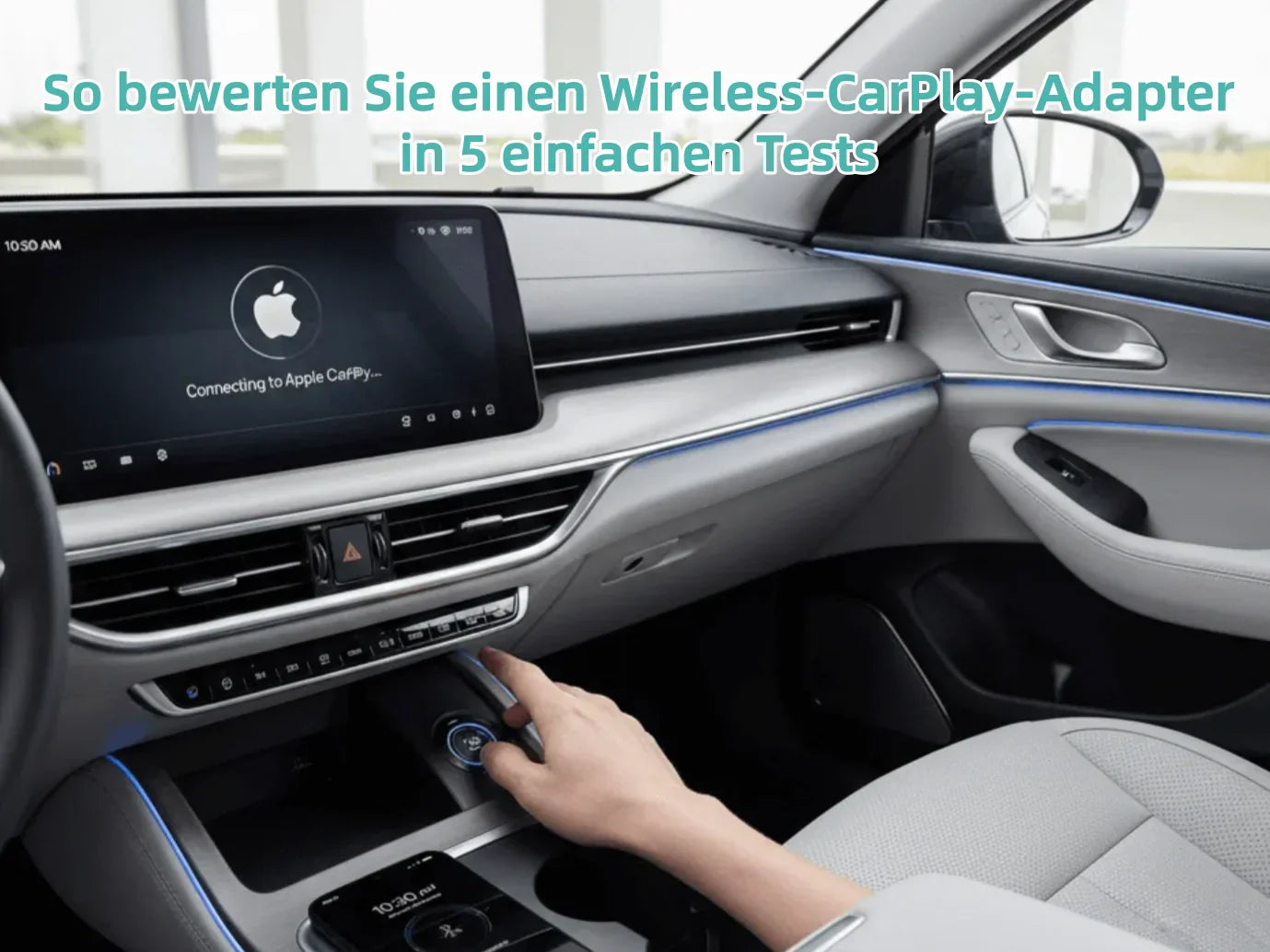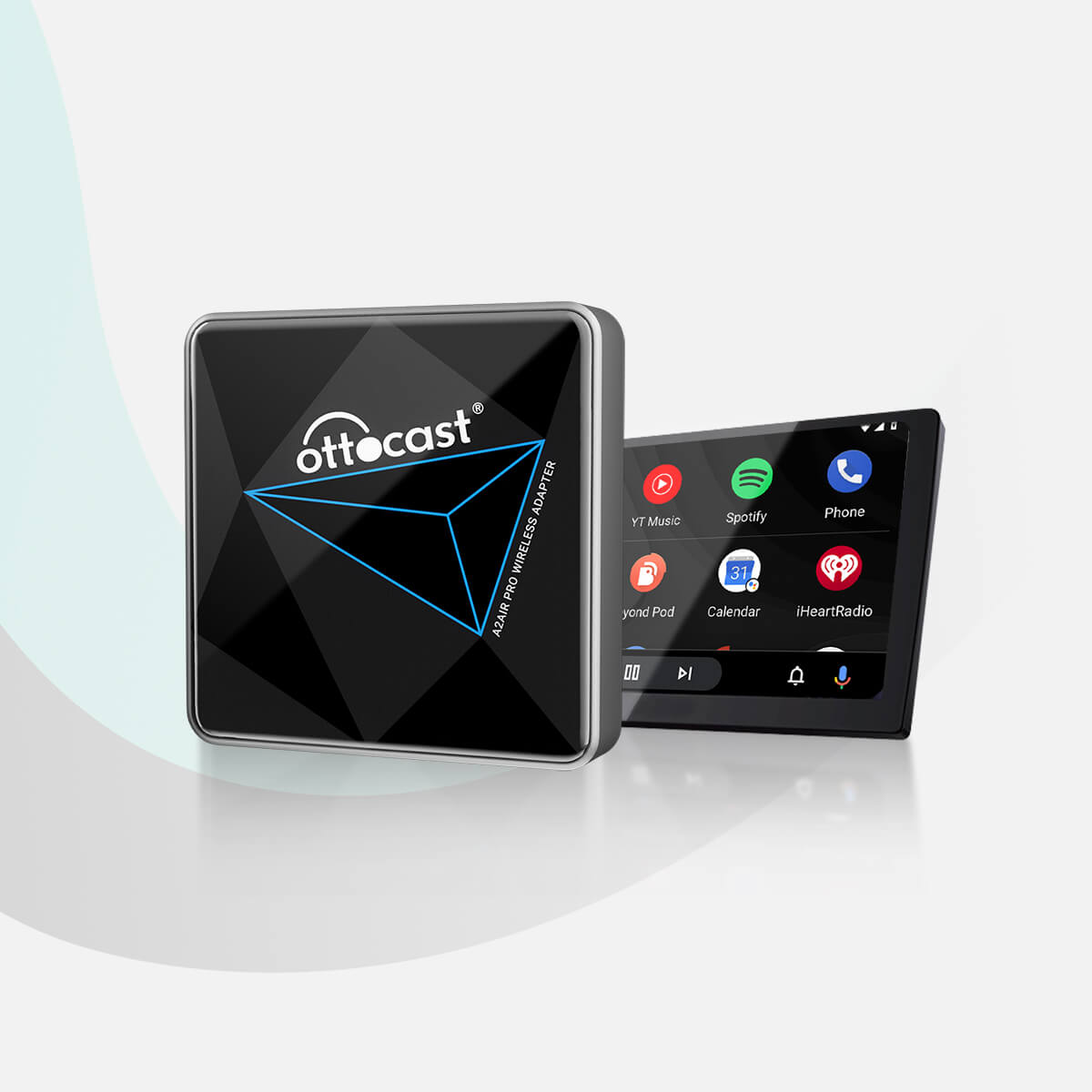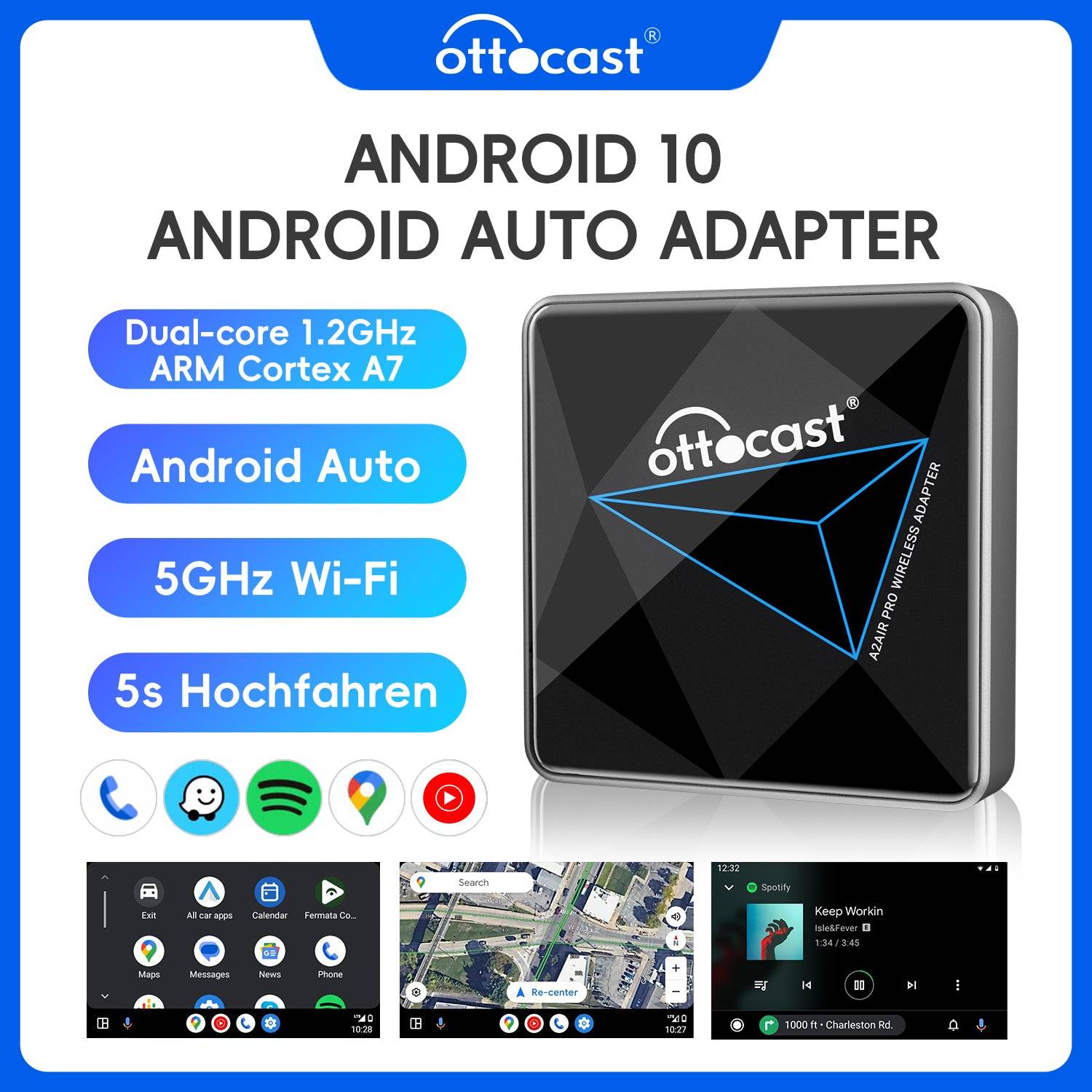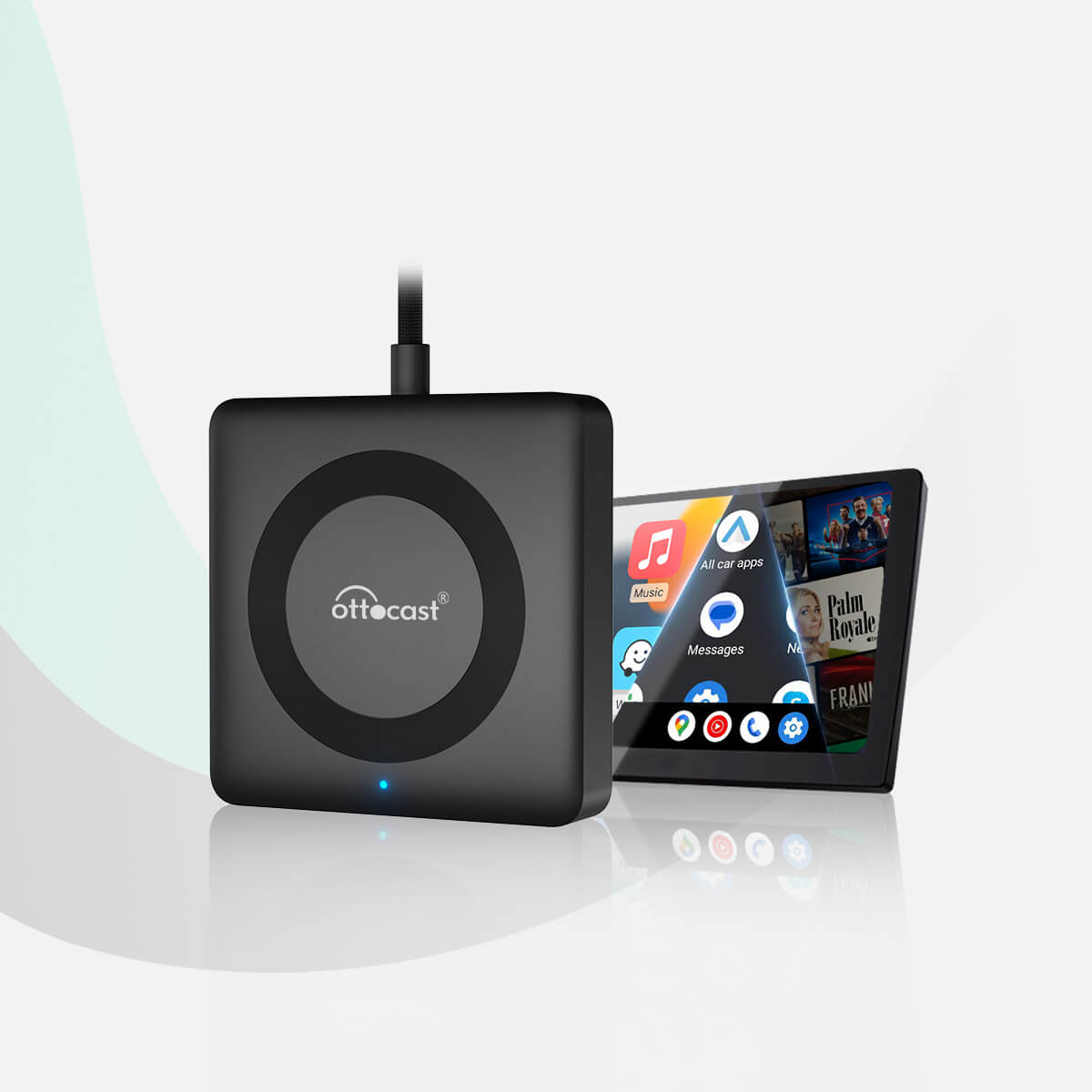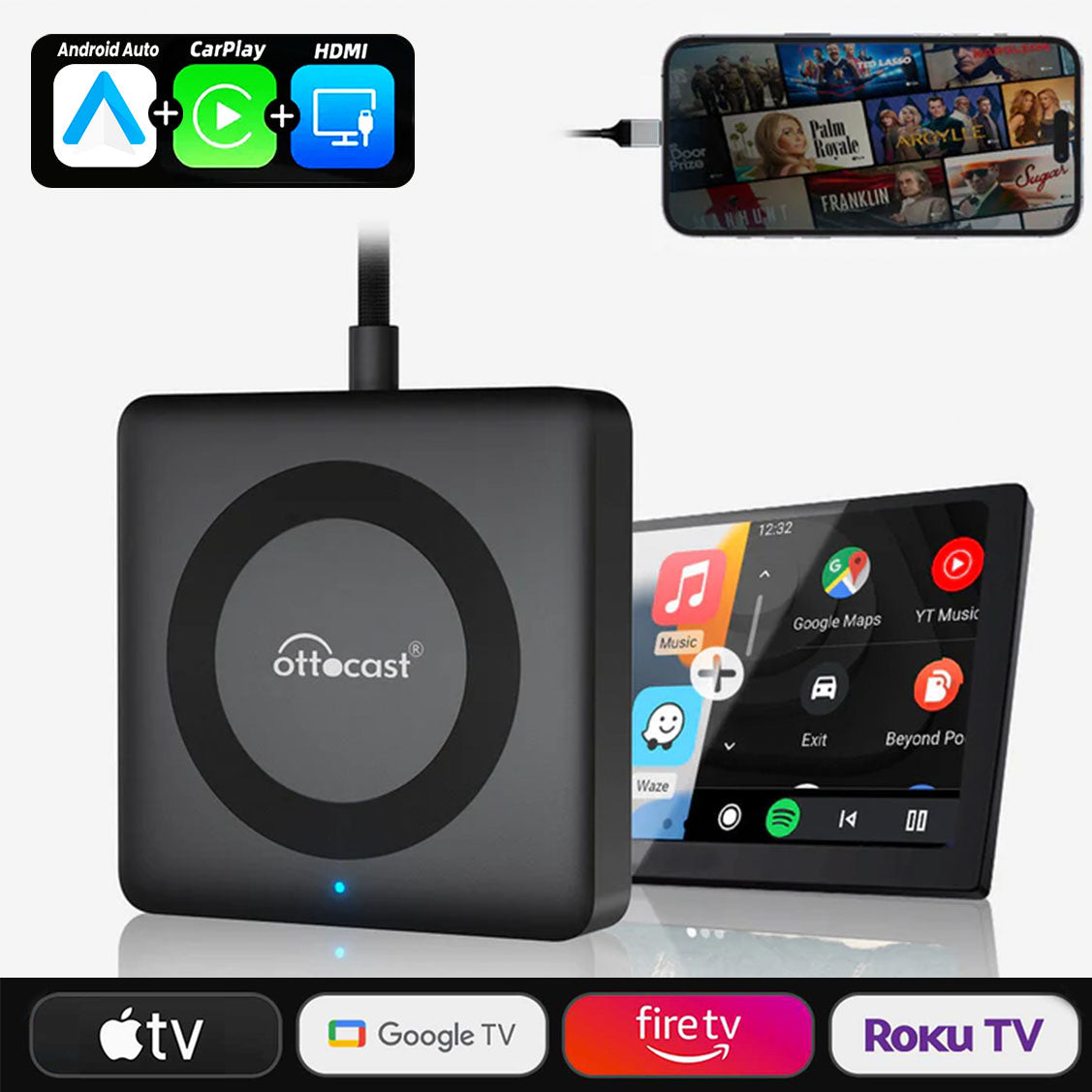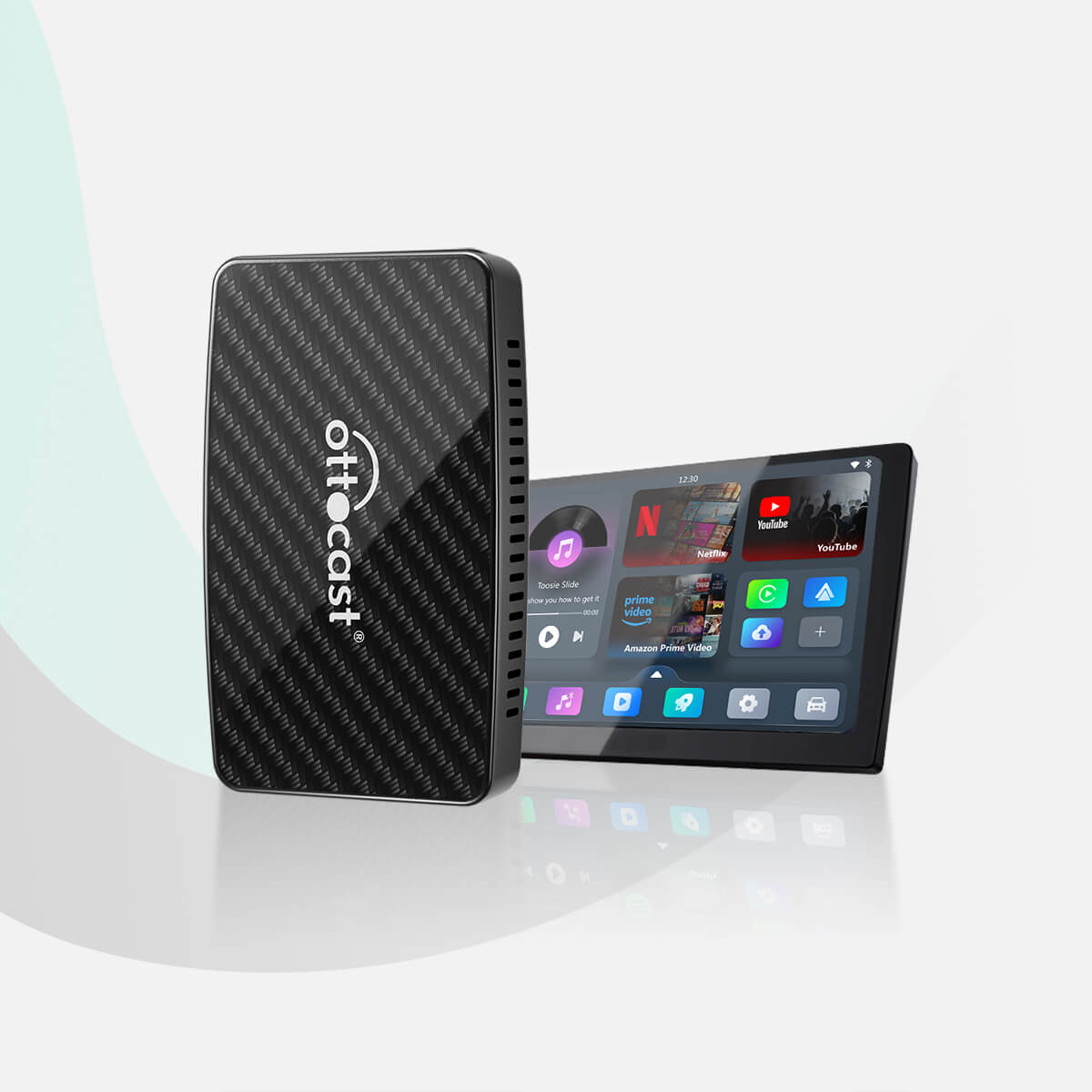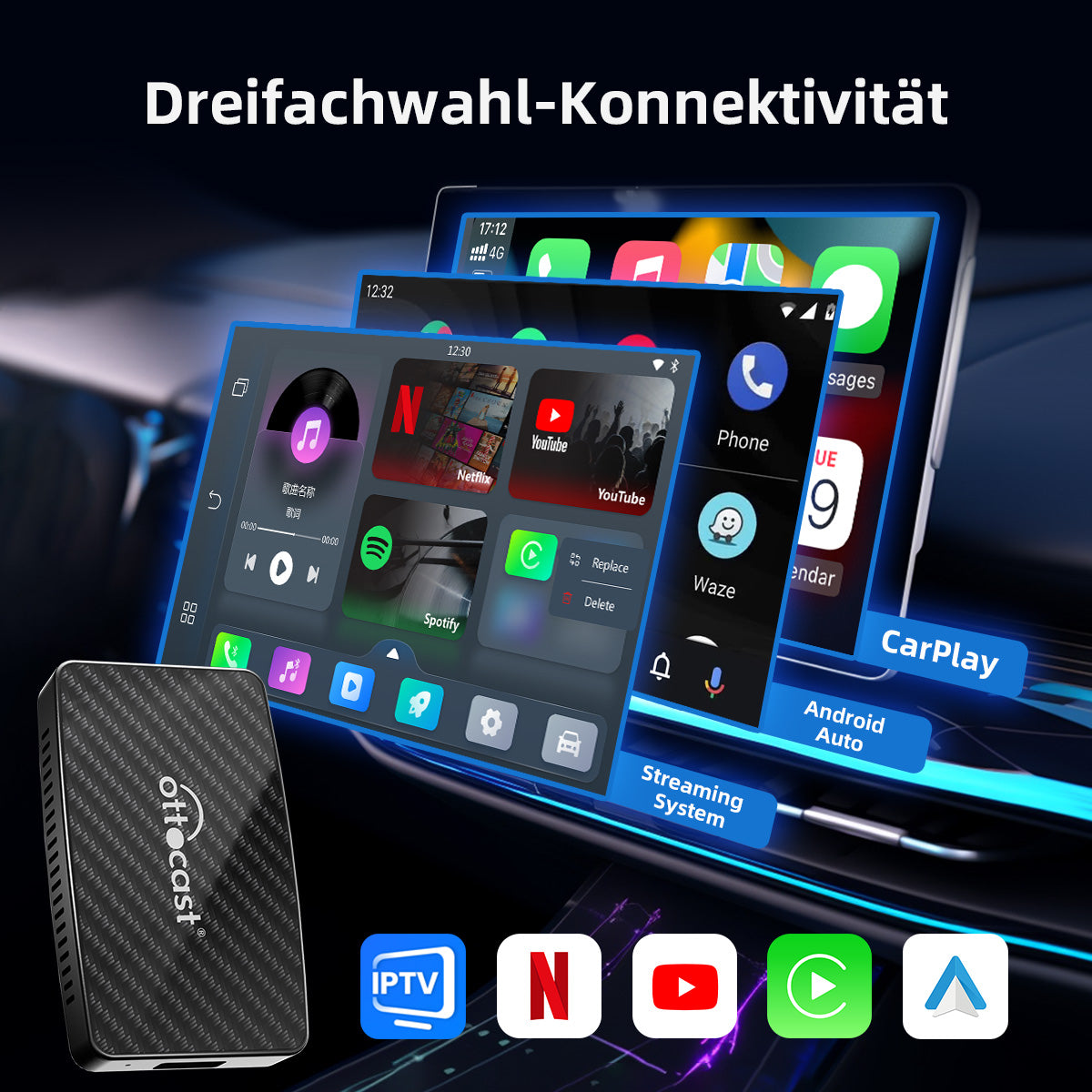introduction
Whether in everyday life or while driving, convenience is always paramount and should be optimized accordingly. Android Auto not only transforms the connection with third-party manufacturers, but also with the user themselves, as it enables seamless syncing with the car's infotainment system. The cable problem presents its challenges – it can often be perceived as annoying and frustrating. This is where the Android Auto Wireless Adapter comes in, bringing a new level of freedom: wireless Android Auto.
With the new Bluetooth adapter, users have the freedom to no longer carry their mobile phone with them on every trip. The dongle also supports a constant wireless connection and provides easy access to important navigation, music, or even call services. Making your life easier with Android Auto wireless adapters? Absolutely! This dongle enhances your driving experience while commuting, traveling, or even during a simple shopping trip—everything is geared toward comfortable and safe driving.
But how does it work? Which adapter do you need? What are the potential advantages and, most importantly, disadvantages? Whether you're commuting or just getting things done, finding the right Android Auto wireless adapter for your needs will make it easier.
What is a wireless Android Auto adapter?

A wireless Android Auto adapter is a small device that connects to the vehicle's infotainment system via USB. It establishes the connection between your smartphone and Android Auto without the need for a wired connection. Traditionally, Android Auto requires a physical connection to function. But now, this limitation can be overcome with the wireless adapter, making the process more convenient and hassle-free.
How does it work?
This adapter acts as a bridge between your phone and the vehicle's system. Here's how it works:
1.Plug the adapter into your vehicle's USB port.
2.Enable Bluetooth and Wi-Fi on your smartphone.
3.For the first connection, connect your phone to the adapter via Bluetooth.
4.A Wi-Fi connection is established automatically, providing a fast and reliable connection for Android Auto.
Once the adapter is set up, it will automatically reconnect the next time you enter the car. This eliminates the need to repeatedly connect your phone.
Main features
●Wireless connectivity: Freedom from USB cables increases safety and convenience while driving.
●Seamless integration: Works like a wired Android Auto connection, but without the physical limitations.
●Quick pairing and reconnecting: Once connected to your device, the adapter will instantly connect to the phone when you enter the vehicle.
Compact and portable: The car adapter is compact enough to be easily stored away. At the same time, the accessory ensures a strong and consistent connection.
●Universal Compatibility: The accessory works with most Android Auto enabled vehicles.
The adapter makes driving easy and flexible, as you can focus on the steering wheel and your attention on the road, which greatly enhances the driving experience.
Android Auto wired vs. wireless: Which is better?

Advantages of a wired connection
•Reliability: A signal traveling over a cable leaves only one source, and thus is not subject to interference. The IP connection is always guaranteed.
●Additional benefit: The mobile phone is also charged while driving, thus preserving the battery.
•Direct, wired options are best for targeted direct speech memory testing and real-time map navigation.
Disadvantages of a wired connection
●A mandatory jailbreak where you constantly have to connect your phone yourself.
●Cables, smartphone connectors and many other plugs are limitless for mechanical devices.
●You, and especially your phone, are tied to one location. This is the so-called "driver's seat."
Advantages of a wireless connection
●A big advantage is the freedom of movement in the room without tangled cables.
•Interior decluttering: Remove YOUR trunks and raise the pedals and dashboard. We're a tidy company with no clutter.
●Automatic pairing: When the car starts, the adapter will pair automatically.
Disadvantages of a wireless connection
●Increased phone drain: If the phone cannot be charged, the battery will drain faster.
●Slightly increased latency: When the user is stationary, it improves accessibility, but with a loss of Rahul.
●Potential problems: A wireless connection is not optimized for all vehicles and infotainment systems.
You're not willing to compromise and decide which is more important for your phone: a mobile Cuber or a mobile Artista. If stability and fast charging are important, then USB is the way to go. But if convenience and ease of use are important, then it's worth investing in a wireless Android Auto adapter; it will make a huge difference while driving.
Can I convert my wired Android Auto to a wireless system?

Yes, an Android Auto wireless adapter can enable a wireless connection to your vehicle without extensive modifications.
Steps to Convert Wired Android Auto to Wireless Android Auto
1.Buy a compatible wireless adapter: The Android Auto supported adapter you should get is of better quality like Ottocast.
2.Plug the adapter into the vehicle's USB port: Plug the adapter into the USB port where you connect your phone to the car.
3.Enable Bluetooth and Wi-Fi on your mobile phone: The settings must be active for the adapter to connect.
4.Pair your smartphone with the adapter: Follow the on-screen instructions to complete the pairing process.
5.Enjoy wireless Android Auto: After configuration, your phone will automatically connect whenever you start the car.
Benefits of switching to wireless Android Auto
●No more cables − There is no need to connect your phone every time you want to drive.
●Quick and convenient connection: The phone connects automatically without any user action.
●Better driver experience: Fewer distractions lead to safer driving.
Possible challenges
●Adapter Compatibility: Some adapters are not suitable for certain makes and models of vehicles.
●Firmware Maintenance: Some adapters require regular updates to function optimally.
●More expensive: A good wireless adapter is more expensive than a standard USB cable.
The benefits of a seamless driving experience are undeniable, which is why switching to wireless Android Auto remains a very special investment for drivers, despite the initial difficulties.
Does Android Auto use wireless Wi-Fi or Bluetooth?
One of the most common questions users have is whether Android Auto Wireless uses Bluetooth or Wi-Fi for connectivity. The answer is that both are used for different purposes, so using both is necessary.
How the connection works
1. Switching to Wi-Fi: After authentication, the adapter switches the connection to a Wi-Fi network created specifically for this purpose.
2.First pairing with Bluetooth: Bluetooth is used for the first pairing and for the authentication of smartphone and vehicle.
3. Continuous data transfer via Wi-Fi: Android Auto features such as access to GPS, media, and voice commands can be executed seamlessly. This is possible because Wi-Fi ensures continuous data transfer.
Advantages of Wi-Fi
●Better audio and video performance: Significantly more applications beyond GPS and music streaming, such as video streaming.
●More stable connection: A big advantage over Bluetooth, as it is significantly less susceptible to interference in everyday use.
●Higher data transfer speeds: For navigation systems and apps with music, these are essential for streaming, navigation and Wi-Fi responsiveness.
Wi-Fi restrictions
●Dependence on strong signals: The Wi-Fi connection is very slow to respond to weak signals.
●High battery consumption: Compared to Bluetooth, your phone's battery is put under significantly greater strain.
Advantages of Bluetooth
●Low power consumption: Battery consumption is lower than Wi-Fi.
●Fewer steps in the pairing process: Simple steps to initiate and maintain an initial connection.
●Reliable short-range connection: Works even in tight spaces, such as a car.
Limitations of Bluetooth
●Low transfer rates: Too slow to handle resource-intensive applications.
●Visible Interference: Multiple signal interference from other wireless devices.
Bluetooth is used during initial pairing, but data exchange occurs over Wi-Fi, which is faster and more stable. Android Auto Wireless works through the synergy of both technologies, enhancing the driving experience by eliminating the need for cables.
Which vehicles are compatible with Android Auto Wireless?
Most vehicles today have built-in support for Android Auto Wireless. However, if your vehicle only supports wired Android Auto, a wireless adapter can provide the necessary functionality.
Registration of popular vehicle brands
●Audi
●BMW
●Ford
●Honda
●Hyundai
●Mercedes-Benz
●Toyota
●Volkswagen
●Nissan
●Kia
Check compatibility
1.Check your car's owner's manual: Check your vehicle's infotainment system documentation to see if it supports Android Auto Wireless.
2.Check the manufacturer's model: Different brands provide lists of compatible models on their websites.
3.Use a wireless adapter: Even without Android Auto in your vehicle, the system can be activated with an adapter.
What do I do if my car doesn't support Android Auto Wireless?
If your car isn't one of the Android Auto Wireless compatible vehicles, you can upgrade to an Android Auto Wireless Adapter. These devices are designed to enable wireless access with most cars that work with an Android Auto dongle. This allows you to gain wireless access without having to upgrade your vehicle's infotainment system.
This way you can determine whether your car can operate Android Auto Wireless and take the necessary steps to modernize your system accordingly.
Ottocast Wireless Adapter - The best choice for Android Auto
Introduction to the Ottocast Wireless Adapter
This Ottocast Wireless Adapter is the perfect device for wireless Android Auto users. It offers installation and comprehensive vehicle support, as well as user-friendly options and stable performance, making Ottocast the optimal choice for Android Auto wireless users.
Why choose Ottocast?
●Easy and quick installation.
●Improved compatibility with different vehicle types.
●Strong, stable wireless connection.
●Automatic reconnection.
Ottocast® A2AIR Pro

●Performance: High-speed wireless Android Auto functionality.
●Compatibility: Works with most vehicles that use wired Android Auto.
Advantages:
●Reliable connectivity with very low latency.
●Compact and easy to carry.
●Excellent reception for uninterrupted access.
Disadvantages:
●A bit expensive compared to some competitors.
Ottocast Play2Video
●Performance: Supports Android Auto and video streaming.
●Compatibility: Works with a variety of infotainment systems.
Advantages:
●Video playback is possible as long as it is supported.
●High speed connectivity.
Disadvantages:
●Some streaming restrictions may apply.
Car TV Mate Max IV Universal

●Performance: Compatible with Apple CarPlay and Android Auto.
Advantages:
●Exceptional media streaming functionality.
●Covers a range of car brands.
Disadvantages:
●Some vehicles may require manual setup.
Ottocast's wireless adapters allow you to upgrade your vehicle's infotainment system and enjoy seamless wireless Android Auto with very little effort.
Frequently Asked Questions (FAQs)
What is a wireless Android Auto adapter?
An Android Auto wireless adapter is a device that allows users to connect their Android phones to the car's Android Auto system without a cable connection. It works by establishing a Bluetooth and Wi-Fi connection that transfers information between the mobile device and the vehicle's infotainment system.
How do I enable Android Auto wirelessly?
To enable Android Auto Wireless, follow these steps:
1.Enable Wi-Fi and Bluetooth on your mobile device.
2.Connect the wireless adapter to your car via USB.
3.Pair the mobile phone with the adapter via Bluetooth.
4.The adapter connects via WLAN to enable stable data transfer.
5. Launch Android Auto on your phone and follow the instructions to complete the setup.
What happens if my Android Auto wireless adapter doesn't work?
If you encounter an error with the Android Auto wireless adapter, try the following:
●Check if the car model and your smartphone can be used with Android Auto Wireless.
●Turn your phone and your car's infotainment system off and then on again.
●Check if there are any firmware updates available for your Wi-Fi adapter.
●Delete Bluetooth pairing and Wi-Fi and reset all connections in the mobile device.
●Try a different USB port in your car.
Which vehicles support Android Auto Wireless?
Many new cars have built-in support for Android Auto Wireless. However, if your car doesn't support it natively, a wireless adapter can enable the feature. Popular car brands that support Android Auto Wireless include:
●Audi
●BMW
●Ford
●Honda
●Hyundai
●Mercedes-Benz
●Toyota
●Volkswagen
●Nissan
●Kia
Can I use Android Auto Wireless without Wi-Fi?
Unfortunately, Wi-Fi is required for Android Auto Wireless to work properly. Bluetooth provides connectivity for the initial pairing, but Wi-Fi handles the majority of data transfer. Without Wi-Fi, the connection will be unstable, and Android Auto may not work as expected.



















